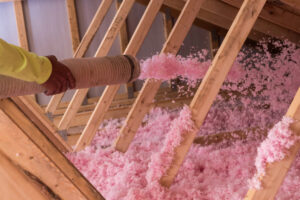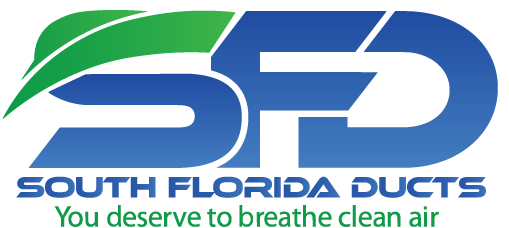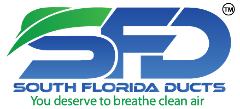 When it comes to maintaining a comfortable living environment in South Florida, effective attic insulation is a crucial element that often goes unnoticed. The region’s unique climate, characterized by high humidity and soaring temperatures, necessitates a thoughtful approach to insulation. This guide will delve into the various types of insulation suitable for South Florida homes, the importance of proper installation, and maintenance tips to ensure long-lasting performance.
When it comes to maintaining a comfortable living environment in South Florida, effective attic insulation is a crucial element that often goes unnoticed. The region’s unique climate, characterized by high humidity and soaring temperatures, necessitates a thoughtful approach to insulation. This guide will delve into the various types of insulation suitable for South Florida homes, the importance of proper installation, and maintenance tips to ensure long-lasting performance.
Understanding the Climate Challenges
South Florida’s climate presents distinct challenges for homeowners. The combination of heat and humidity can lead to increased energy consumption and discomfort if not managed properly. Here are some key factors to consider:
High Humidity Levels
The humidity in South Florida can reach uncomfortable levels, which can affect indoor air quality and lead to mold growth. This makes it essential to choose insulation materials that resist moisture absorption.
Temperature Fluctuations
With temperatures often exceeding 90°F in the summer, effective insulation helps maintain a stable indoor temperature, reducing the reliance on air conditioning systems.
Energy Efficiency
Proper insulation can significantly lower energy bills by minimizing heat transfer. This is particularly important in a region where air conditioning is a necessity for comfort.
Types of Insulation Suitable for South Florida
Selecting the right type of insulation is vital for ensuring your home remains energy-efficient and comfortable. Here are some of the most effective insulation options for South Florida homes:
Spray Foam Insulation
Spray foam insulation is a popular choice due to its superior sealing capabilities. When applied, it expands to fill gaps and cracks, creating an airtight barrier that prevents moisture intrusion.
-
- Benefits:
- Excellent moisture resistance
- High R-value per inch
- Long-lasting performance
- Considerations:
- Higher initial cost compared to other insulation types
- Requires professional installation
- Benefits:
Fiberglass Insulation
Fiberglass insulation is one of the most commonly used materials in residential construction. It is made from fine glass fibers and is available in batts or loose-fill forms.
-
- Benefits:
- Cost-effective
- Non-combustible and resistant to moisture
- Easy to install in various spaces
- Considerations:
- Can lose effectiveness if compressed
- Requires careful installation to avoid gaps
- Benefits:
Cellulose Insulation
Cellulose insulation is made from recycled paper products and is treated for fire resistance. It is an eco-friendly option that provides good thermal performance.
-
- Benefits:
- High R-value
- Environmentally friendly
- Good soundproofing qualities
- Considerations:
- Can absorb moisture, leading to potential mold issues
- May require a vapor barrier in humid climates
- Benefits:
Mineral Wool Insulation
Mineral wool, also known as rock wool, is made from natural or recycled materials and is known for its excellent fire resistance and soundproofing capabilities.
-
- Benefits:
- Moisture-resistant
- High R-value
- Non-combustible
- Considerations:
- Heavier than other insulation types
- Can be more expensive
- Benefits:
Determining the Right R-Value
The effectiveness of insulation is measured by its R-value, which indicates its resistance to heat flow. In South Florida, the recommended R-value for attic insulation typically ranges from R-30 to R-38.
How to Measure Existing Insulation
To determine if your attic insulation meets the recommended levels, follow these steps:
-
- Check the Thickness: Measure the depth of the insulation. If it is below the recommended levels, consider adding more.
- Assess the Coverage: Ensure that the insulation is evenly distributed across the attic space.
- Calculate the R-Value: Use the thickness and type of insulation to estimate the R-value. For example, fiberglass batts typically provide R-13 to R-15 per 3.5 inches.
Installation Best Practices
Proper installation is crucial for maximizing the effectiveness of attic insulation. Here are some best practices to follow:
Hire a Professional
While some homeowners may choose to install insulation themselves, hiring a professional ensures that the job is done correctly. Professionals have the necessary tools and expertise to handle complex installations, especially with spray foam insulation.
Ensure Proper Ventilation
Ventilation plays a vital role in maintaining indoor air quality and preventing moisture buildup. Ensure that your attic has adequate ventilation to allow for airflow, which helps regulate temperature and humidity levels.
Use Vapor Barriers
In humid climates like South Florida, vapor barriers are essential to prevent moisture from penetrating insulation. Install a vapor barrier on the warm side of the insulation to keep moisture from condensing within the insulation material.
Maintenance Tips for Longevity
Once your attic insulation is installed, regular maintenance is key to ensuring its effectiveness over time. Here are some tips to keep in mind:
Conduct Regular Inspections
Inspect your attic insulation at least once a year. Look for signs of moisture, mold, or pest infestations. Address any issues promptly to prevent further damage.
Monitor Indoor Humidity Levels
Use a hygrometer to monitor indoor humidity levels. Ideally, indoor humidity should be between 30% and 50%. If levels exceed this range, consider using a dehumidifier to reduce moisture.
Replace Damaged Insulation
If you notice any damaged or compressed insulation, replace it as soon as possible. Damaged insulation can significantly reduce energy efficiency and lead to higher utility bills.
The Financial Benefits of Insulation
Investing in quality attic insulation can lead to significant long-term savings. Here are some financial benefits to consider:
Lower Energy Bills
With effective insulation, your home will require less energy to maintain a comfortable temperature. This translates to lower monthly energy bills, providing immediate financial relief.
Increased Home Value
A well-insulated home is more attractive to potential buyers. Investing in insulation can enhance your home’s resale value, making it a wise financial decision.
Tax Incentives
Many states offer tax incentives for energy-efficient home improvements, including insulation upgrades. Check with local authorities to see if you qualify for any rebates or tax credits.
We Provide Attic Insulation Services
Research by the Insulation Institute reveals that approximately 90% of South Florida residences lack adequate insulation.
> Learn More
Proper attic insulation is essential for South Florida homeowners looking to enhance comfort, improve energy efficiency, and protect their homes from the region’s unique climate challenges. By understanding the various insulation options available, determining the appropriate R-value, and following best installation practices, you can ensure that your home remains a comfortable sanctuary year-round. Regular maintenance and monitoring will further extend the life of your insulation, providing lasting benefits for both your home and your wallet.
Contact Us (954-909-4281) For a Free Estimate
Book an Appointment
—
 About South Florida Ducts
About South Florida Ducts
Air Duct Cleaning
We remove the maximum amount of the dirt and dust possible.
> Learn More
Air Duct Restoration
Hospital grade duct restoration when ducts need more than a vacuuming.
> Learn More
New Air Ducts Installed
New air ducts vastly improve your AC’s efficiency and overall air quality.
> Learn More
A/C Services
From routine maintenance visits to custom installations, SFD does it all and does it well.
> Learn More

 About South Florida Ducts
About South Florida Ducts